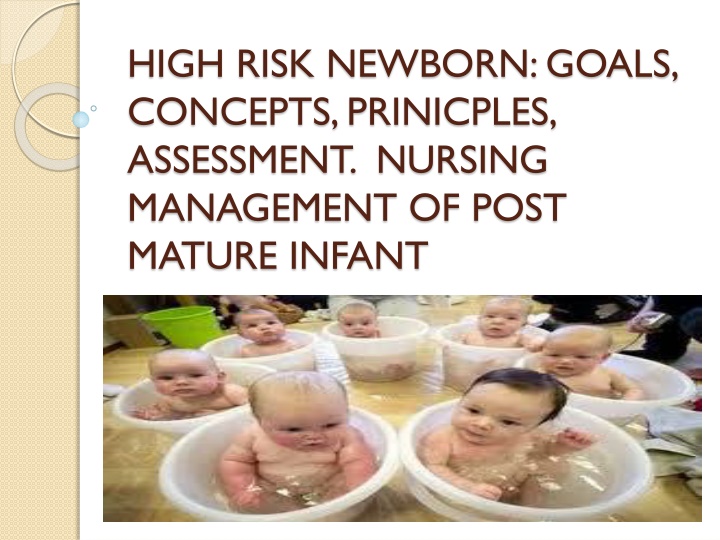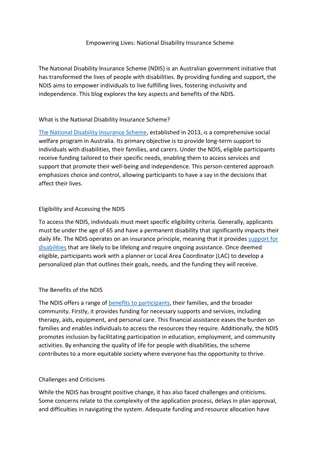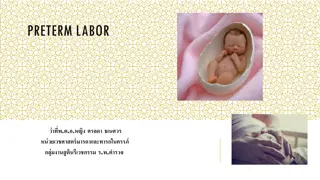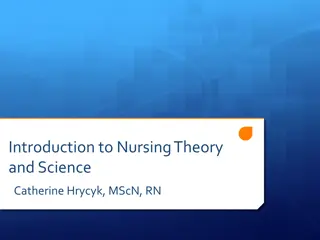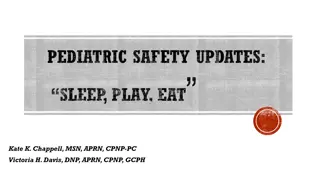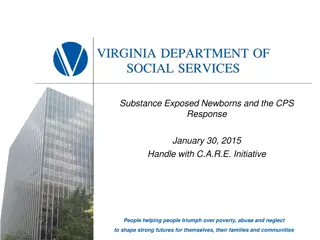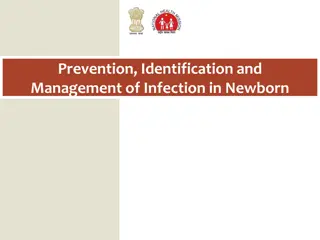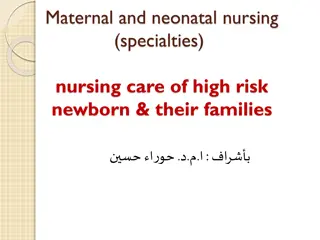Nursing Management of High-Risk Newborns: Post-Mature Infant Focus
High-risk newborns, including post-mature infants, require specialized care due to their increased chances of morbidity. Identification, goals, assessment, nursing principles, and management strategies are crucial in providing effective care for these vulnerable neonates. Predisposing factors, clinical manifestations, and diagnostic evaluations play key roles in the comprehensive care plan for these infants.
Uploaded on Sep 25, 2024 | 3 Views
Download Presentation

Please find below an Image/Link to download the presentation.
The content on the website is provided AS IS for your information and personal use only. It may not be sold, licensed, or shared on other websites without obtaining consent from the author.If you encounter any issues during the download, it is possible that the publisher has removed the file from their server.
You are allowed to download the files provided on this website for personal or commercial use, subject to the condition that they are used lawfully. All files are the property of their respective owners.
The content on the website is provided AS IS for your information and personal use only. It may not be sold, licensed, or shared on other websites without obtaining consent from the author.
E N D
Presentation Transcript
HIGH RISK NEWBORN: GOALS, CONCEPTS, PRINICPLES, ASSESSMENT. NURSING MANAGEMENT OF POST MATURE INFANT
DEFINITION High risk newborn can be defined as a newborn, regardless of birth weight, size or gestational age who has a greater than average chance of morbidity especially within the first 28 days of life.
IDENTIFICATION Birth weight less than 2.5kg Twins Birth order 5 and more Artificial feeding Infection
GOALS Perinatal prevention Resuscitation and stabilization Evaluate and manage Monitoring and therapeutic modalities Family centered care
ASSESSMENT Initial assessment apgar scoring
Transitional assessment first period of reactivity second period of reactivity Behavioral assessment Physical assessment Reflexes
Post mature infant Infants born of a gestation that extends beyond 42weeks as calculated from the mothers last menstrual period.
Predisposing factors Pregnancy between the age of 15-19 yrs Elderly women Wrong dates Multiple pregnancy Fetal anomalies Hereditary
Clinical manifestation Absence of vernix caseosa Loose skin and little subcutaneous fat Absence of lanugo Abundent hair on the head and long nails Skin is wrinkles, cracked and peeling Umbilical cord is thin
Diagnostic evaluation History collection Fetal movement recording Electronic fetal monitoring Ultrasonograpy Biophysical profile Doppler flow study
management Immediate care clear the airway
Body temperature Prevention of infection
Apgar score Breast feeding
Umbilical cord care Eye care
Diaper care Hypoglycemic management
Vitamin k injection Weight record
